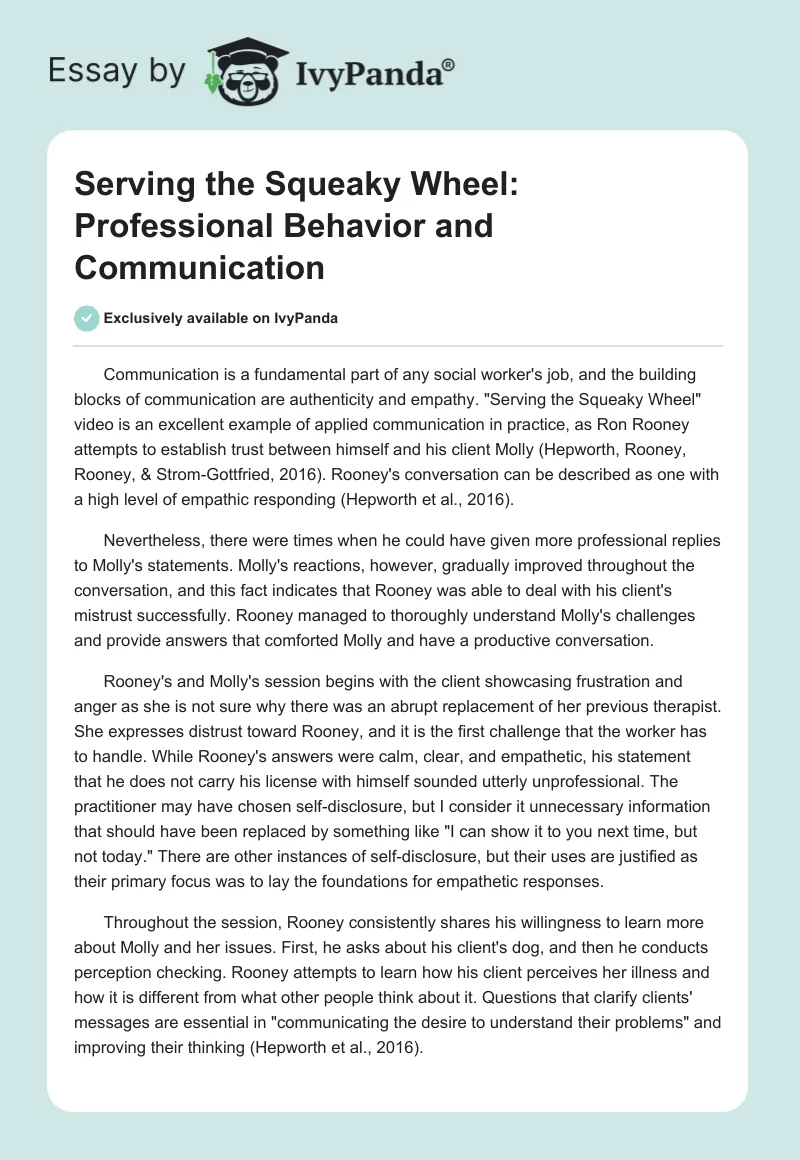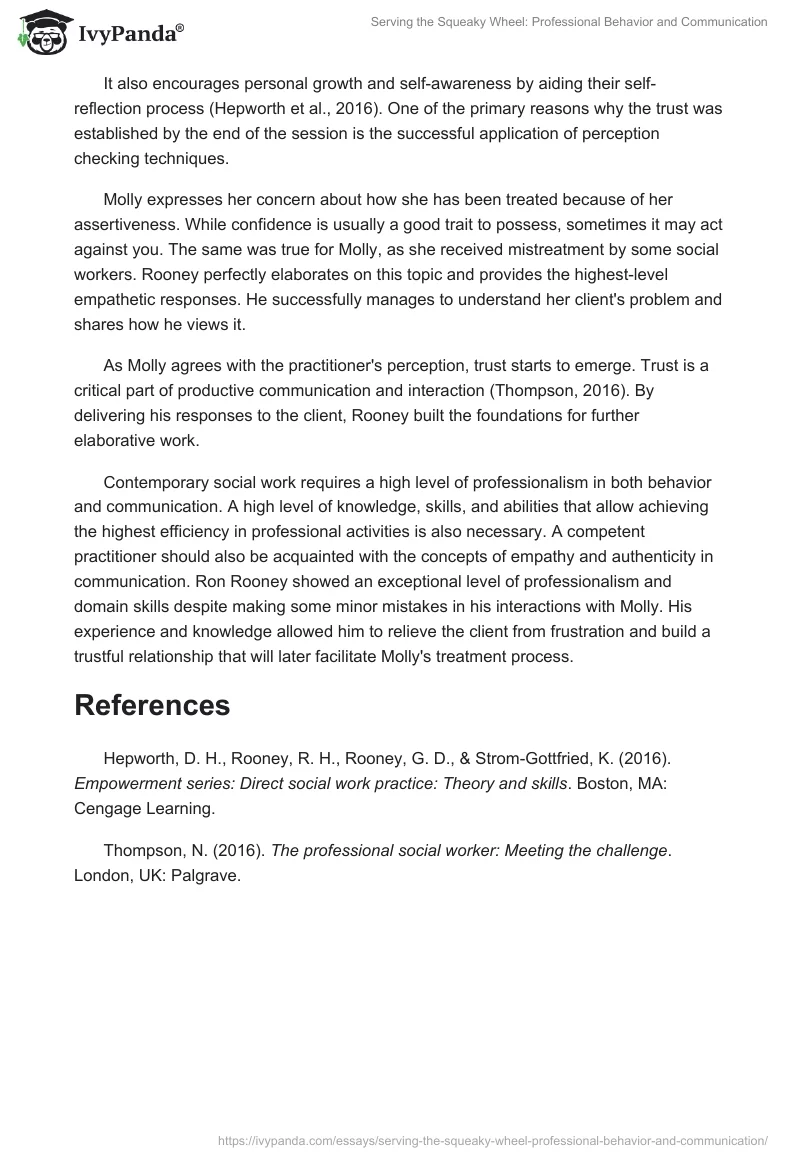Communication is a fundamental part of any social worker’s job, and the building blocks of communication are authenticity and empathy. “Serving the Squeaky Wheel” video is an excellent example of applied communication in practice, as Ron Rooney attempts to establish trust between himself and his client Molly (Hepworth, Rooney, Rooney, & Strom-Gottfried, 2016). Rooney’s conversation can be described as one with a high level of empathic responding (Hepworth et al., 2016).
Nevertheless, there were times when he could have given more professional replies to Molly’s statements. Molly’s reactions, however, gradually improved throughout the conversation, and this fact indicates that Rooney was able to deal with his client’s mistrust successfully. Rooney managed to thoroughly understand Molly’s challenges and provide answers that comforted Molly and have a productive conversation.
Rooney’s and Molly’s session begins with the client showcasing frustration and anger as she is not sure why there was an abrupt replacement of her previous therapist. She expresses distrust toward Rooney, and it is the first challenge that the worker has to handle. While Rooney’s answers were calm, clear, and empathetic, his statement that he does not carry his license with himself sounded utterly unprofessional. The practitioner may have chosen self-disclosure, but I consider it unnecessary information that should have been replaced by something like “I can show it to you next time, but not today.” There are other instances of self-disclosure, but their uses are justified as their primary focus was to lay the foundations for empathetic responses.
Throughout the session, Rooney consistently shares his willingness to learn more about Molly and her issues. First, he asks about his client’s dog, and then he conducts perception checking. Rooney attempts to learn how his client perceives her illness and how it is different from what other people think about it. Questions that clarify clients’ messages are essential in “communicating the desire to understand their problems” and improving their thinking (Hepworth et al., 2016).
It also encourages personal growth and self-awareness by aiding their self-reflection process (Hepworth et al., 2016). One of the primary reasons why the trust was established by the end of the session is the successful application of perception checking techniques.
Molly expresses her concern about how she has been treated because of her assertiveness. While confidence is usually a good trait to possess, sometimes it may act against you. The same was true for Molly, as she received mistreatment by some social workers. Rooney perfectly elaborates on this topic and provides the highest-level empathetic responses. He successfully manages to understand her client’s problem and shares how he views it.
As Molly agrees with the practitioner’s perception, trust starts to emerge. Trust is a critical part of productive communication and interaction (Thompson, 2016). By delivering his responses to the client, Rooney built the foundations for further elaborative work.
Contemporary social work requires a high level of professionalism in both behavior and communication. A high level of knowledge, skills, and abilities that allow achieving the highest efficiency in professional activities is also necessary. A competent practitioner should also be acquainted with the concepts of empathy and authenticity in communication. Ron Rooney showed an exceptional level of professionalism and domain skills despite making some minor mistakes in his interactions with Molly. His experience and knowledge allowed him to relieve the client from frustration and build a trustful relationship that will later facilitate Molly’s treatment process.
References
Hepworth, D. H., Rooney, R. H., Rooney, G. D., & Strom-Gottfried, K. (2016). Empowerment series: Direct social work practice: Theory and skills. Boston, MA: Cengage Learning.
Thompson, N. (2016). The professional social worker: Meeting the challenge. London, UK: Palgrave.


